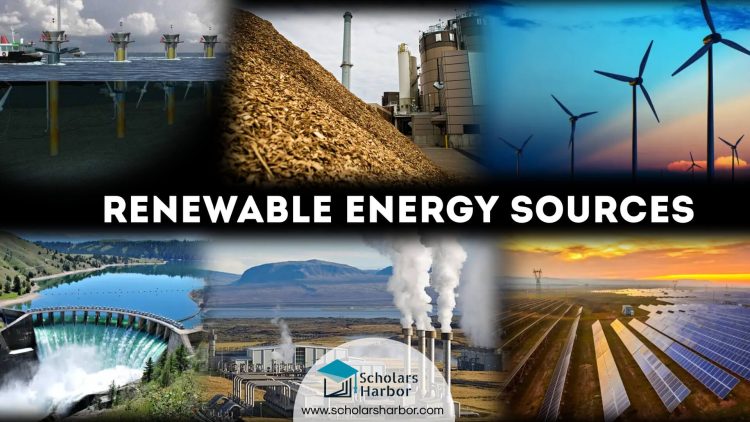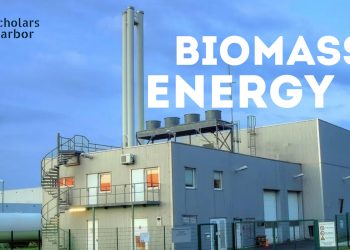The conventional fossil fuels like coal and oil make up the majority of the globe’s energy resources. According to a latest study, emissions from energy use are already at their peak ever. Petroleum fuel dominance & excessive use of energy have led to a dramatic increase in greenhouse gas emissions, which has had a negative impact on the environment globally.
Therefore, reducing emissions & transforming the power sector into renewable energy are top priorities for all nations. The world energy consumption is skyrocketing; by 2030, the overall amount of energy consumed has more than twice, and the amount of electricity consumed will have nearly tripled.
The variable damage cost generated by carbon fuels, several nations have devised their own structures and laws, and they have also been implemented in practice to encourage the incorporation of renewable energy sources into the energy mix. Furthermore, the potential of the existing traditional sources is limitless and is accountable for ecosystems.
Renewable Energy
Energy obtained from sources that are considered “renewable” is known as renewable energy or cleaner energy. They are self-renewing such as sunshine, streaming water, the heat generated by the earth’s interior, wind and biomass.
The research & commercialization stages of green energy vary. For certain purposes, several technologies are indeed available commercially. When compared to traditional energy sources, cleaner energy technologies have significant advantages due to their abundance & global availability.
Cleaner energy solutions require more investment than competing traditional technologies. The economics of cleaner technologies, however, increase in contrast to traditional technologies after the first investments have been completed because operation & maintenance expenses are cheap when compared to those spent utilizing gasolines.
Renewable Energy Types
Cleaner/ renewable energy sources will be critical to the future of the planet. Cleaner energy sources are ones that can be utilized to generate energy continuously. Presently, the most common renewable energy types are
1. Hydropower
Hydropower plants around the world are more than just places to generate clean renewable energy. Hydropower plants also have an important role in socioeconomic development by irrigating farm areas, supplying the appropriate water system, particularly during the dry season, regulating the scenario during the monsoon season, and improving main canals.
Presently, hydropower is the only commonly available renewable energy on a big scale in the globe. The quantity of power produced by hydropower is not consistent and is determined by the amount of annual rainfall. Small-scale hydropower generating is now becoming widely attractive for the off-grid power supply in rural locations.
Large hydropower projects frequently have major ecological, cultural, social, technological, economic, and financial repercussions. With no mitigation strategies, these effects are distributed unequally, and they face both high rewards and hazards.
2. Wind Energy
In terms of installed capacity, wind energy ranks second among renewable energy technologies used in electricity generation and is expanding quickly. The installed wind farm production is expected to increase, and this will be important for reducing environmental issues. However, the impacts of global warming also affect wind farms.
Depending on the area in question, certain modifications related to climate will probably be advantageous for the wind energy sector, while other modifications may have a damaging effect on wind energy advancements.
Research study on the capacity of wind energy reveal an abundance of wind resources on a global scale. Nowadays, a developed, economical, and essentially emission free technology called wind energy is employed extensively throughout much of the globe to provide power.
3. Biomass Energy
The term “biomass” refers to all plant materials, vegetable waste, & biological processes that can generate power. For biomass, materials such as sawdust, wood, animal waste, & food scraps are used. Biotechnology is the method of transforming biomass and other cleaner resources into energy.
The primary uses of this energy are for the creation of power, heating, & lighting. The National Renewable Energy Policy is focused on highlighting how crucial it is to switch to cleaner resources with the fewest negative environmental effects.
Biomass has emerged as a highly appealing and feasible choice under these circumstances. The largest global source of biomass comes from solid waste that has been left over from past years.
4. Solar Energy
When it comes to renewable energy, solar power is the largest prevalent and is accessible with both indirect & direct methods. There seems to be a lot of potential of using sunlight for high temperature applications like food preparation, heating systems, process heat, etc.
The term “concentrated solar electricity power system” refers to a system that uses energy from the sun to generate power through a process called solar thermal conversion. Mainly, energy from the sun is gathered and then converted into electrical energy using a solar collector, which is a heat-to-electricity transformation device.
Traditionally, photovoltaics is used to convert direct sunlight to electric power. The photovoltaic (PV) effect depends on light interactions with energies. Photovoltaic modules generate electricity directly from light without emissions, noise, or vibration. Sunlight is free but power generation cost is exceptionally high.
5. Geothermal Energy
Geothermal resources comprise hot steam, hot water, Magma, dry rock and ambient earth heat. Liquid & steam economically viable sources have been created for geothermal energy. Research focuses on reducing prices, developing techniques for locating and describing reservoirs and using more considerable resources.
In order to remove heat from the fluid in the earth, geothermal heat pumps are primarily used. Geothermal pumps don’t produce energy; instead, they use heat exchangers as well as the specific heat of the soil multiple feet below the surface to warm or cool the air within buildings.
6. Tidal power
The multiple times change in sea level brought on mostly by gravitational forces is exploited for tidal power. Oceanic effects of Moonlight and, to a smaller extent of the Sun. The Earth spins also play an important role in the tides’ creation.
Due to the initial progress, tidal technology is not yet commercially feasible on a wide scale. A tidal barrage makes uses the potential power of the tide and has been quite effective. Utilizing a tidal current turbine, kinetic power from tides can be used to create electric power.
Cite this Article
| Author: | Scholars Harbor |
| Year: | 2022 |
| Title | What Is Renewable Energy? – Definition And Its Types Explained |
| Publisher: | Scholars Harbor |
| URL: | https://scholarsharbor.com/what-is-renewable-energy-definition-and-its-types-explained/ |











Discussion about this post